They’re beautiful, they’re fascinating to watch, and they provide chemical-free pest control. Woodpeckers are a welcome guest to many yards, and if you’d like to see more of them, here’s how.
How to Attract Woodpeckers
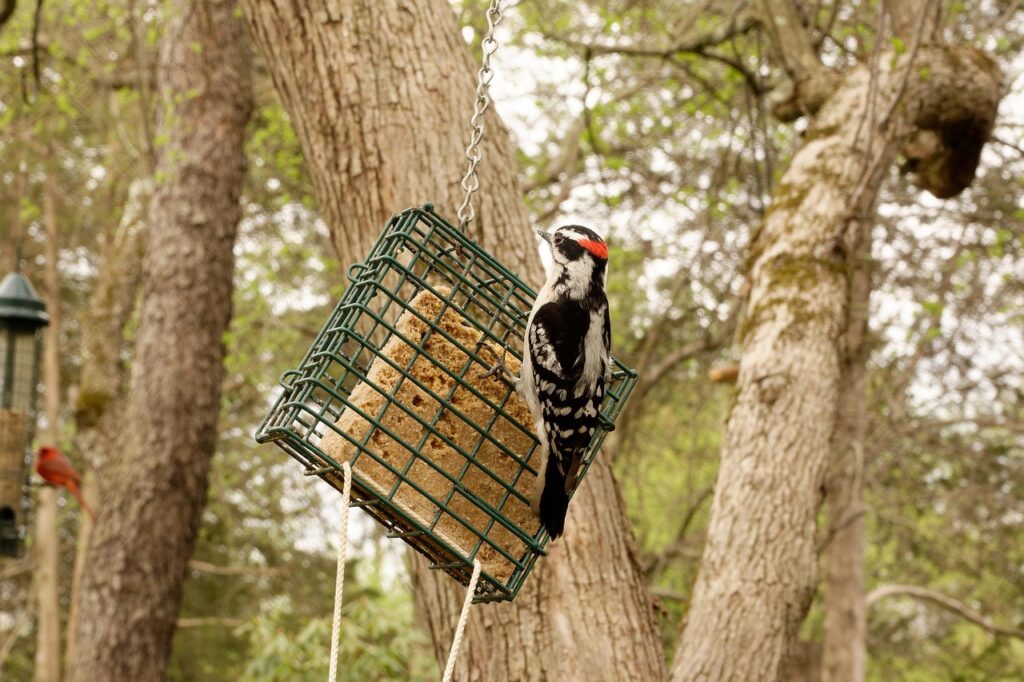
Offer their favorite foods
Sure, woodpeckers eat grubs, beetles, and other insects, but their palate is varied. In fact, you’ll sometimes find woodpeckers at your bird feeders if you fill them with the right stuff. Woodpeckers love seeds and nuts, so keep your feeders full of healthy, nutrient-dense foods like black-oil sunflower seeds and peanuts. Cracked corn, nectar, and fruits are big hits as well. And since they also love suet, it may be time to add a suet feeder to your yard.
Mount a nest box
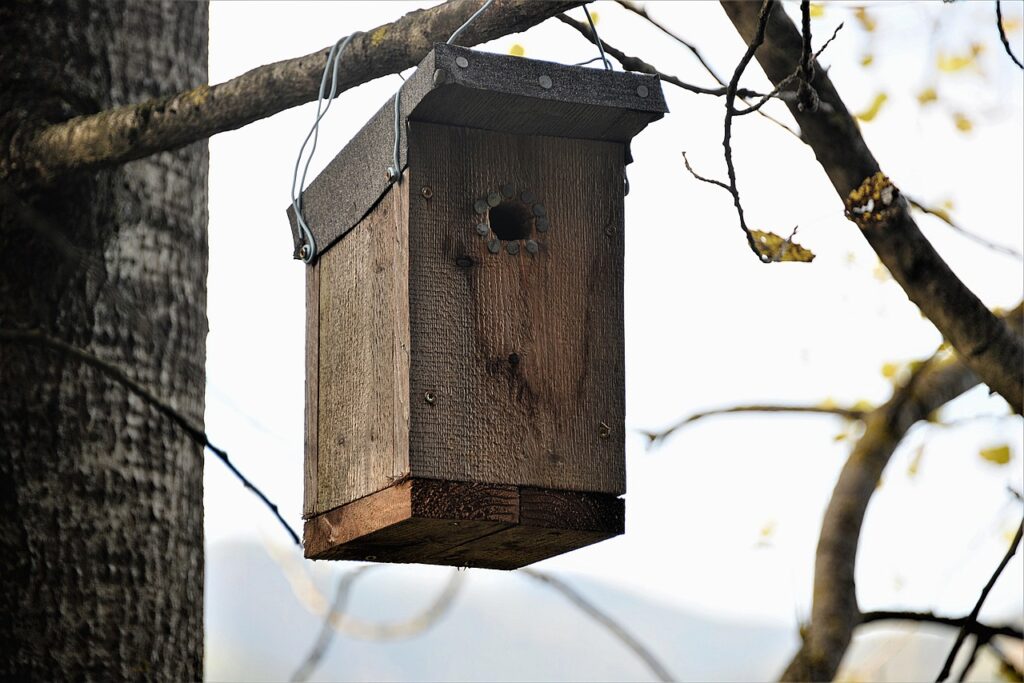
Since woodpeckers are cavity-nesting birds (which is why they’re so fond of drilling holes!), mounting a nest box to a tree or post is a beacon to nesting woodpeckers. Woodpecker nesting season is in April or May, but the birds often start looking for nesting spots in February, so now is the time to put them out. And when it comes to where the box is placed, location is key. Mount it up high—typically between 6’ and 12’ up—in a secluded area with little to no traffic (foot or otherwise). Look for an area in your yard with a clear flight path to the box. To help them find the box, mount a suet feeder nearby. And to make the nest box more welcoming, add a layer of sawdust or wood chips as natural nesting material.
Keep your yard chemical-free
You know those insects that eat your growing fruits and vegetables and prey on your plants? They’re also the tasty morsels woodpeckers love to feast on—so let them! By bypassing chemical sprays and harsh pest repellants and opting for organic pest-control solutions, you’ll keep the natural food chain going. In fact, did you know that some woodpeckers, like the Northern Flicker, eat hundreds of ants at a time? They also love termites and caterpillars—home and plant wreckers! On the other hand, insecticides can poison, not only bugs, but the birds those bugs eat. So when it comes to pest control, consider more natural alternatives.
Offer a secluded oasis
A Downy Woodpecker takes a quick drink at a quiet birdbath:
When it comes to bathing and drinking, woodpeckers prefer their water source a bit more private. Add a birdbath near a shrub or bush, or another quiet, shaded area. Some swear by adding a dripper or bubbler to the bath, to create the same gurgling effect as a natural water source. Make sure to refresh the water every few days and wash the birdbath every four days using a vinegar and water solution.
Leave the trees and brush piles

It’s a common myth that woodpeckers kill trees. In fact, they typically inflict only minor damage to trees, by drilling small holes—damage that most healthy trees can withstand. And typically, woodpeckers prefer to excavate dead trees rather than live ones when it comes to nesting and foraging for food. So if you have a dead tree, or snag, on your property, you may want to consider leaving it as habitat for woodpeckers and other birds and small animals.
What if I Don’t Want Woodpeckers Near My House?
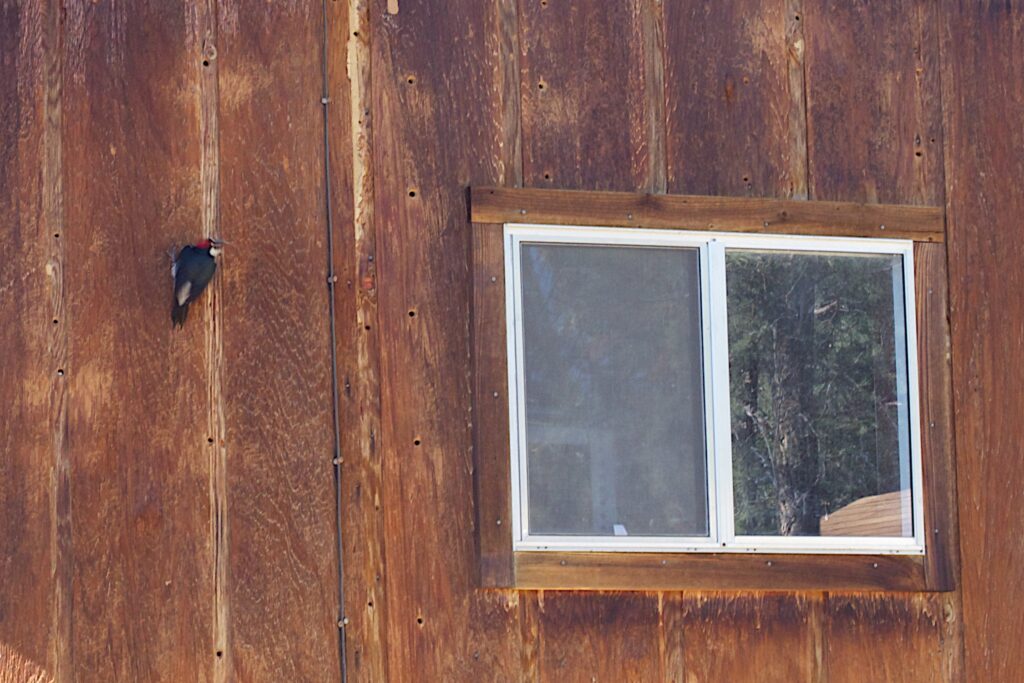
While there are many reasons to love woodpeckers, there are also reasons you might not want them hanging around your property. The obvious one is that they like to peck on and drill holes in things, specifically wooden objects, like your house, deck, or roof. That’s understandable. And there are many bird-safe ways to keep woodpeckers away, including hanging shiny objects like aluminum foil strips and CDS around your house. Fake owls and hawks and other decoys are also effective. Another way to keep them away is by distraction. You can still enjoy the view of woodpeckers in your yard by placing a feeder on the opposite side of your yard, far away from the house, roof, and other potential pecking sites.
The Woodpeckers of Big Bear Lake
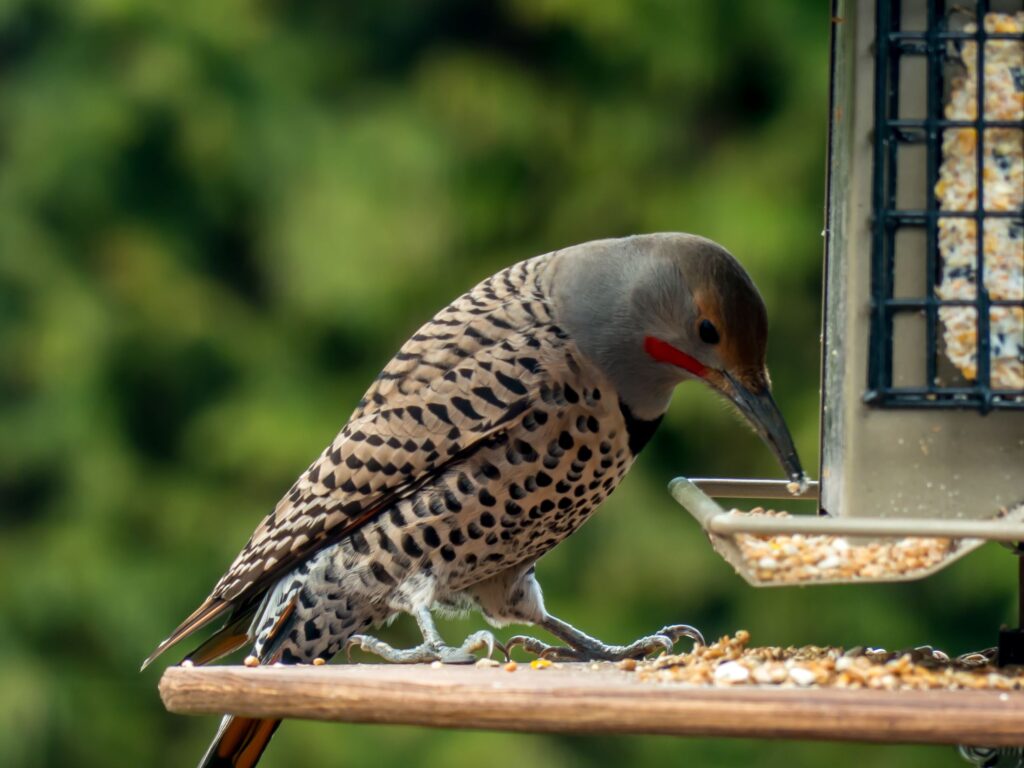
Big Bear Lake is home to several woodpecker species, including:
- Acorn Woodpecker
- Downy Woodpecker
- Hairy Woodpecker
- Nuttall’s Woodpecker
- White-headed Woodpecker
- Northern Flicker
- Red-breasted Sapsucker
- Williamson’s Sapsucker
- Lewis’s Woodpecker
Where can you find these, and other, birds (including rare species)? Check out the Chirp guide “Where To Go Birdwatching in Big Bear Lake.”
Wacky Woodpecker Facts
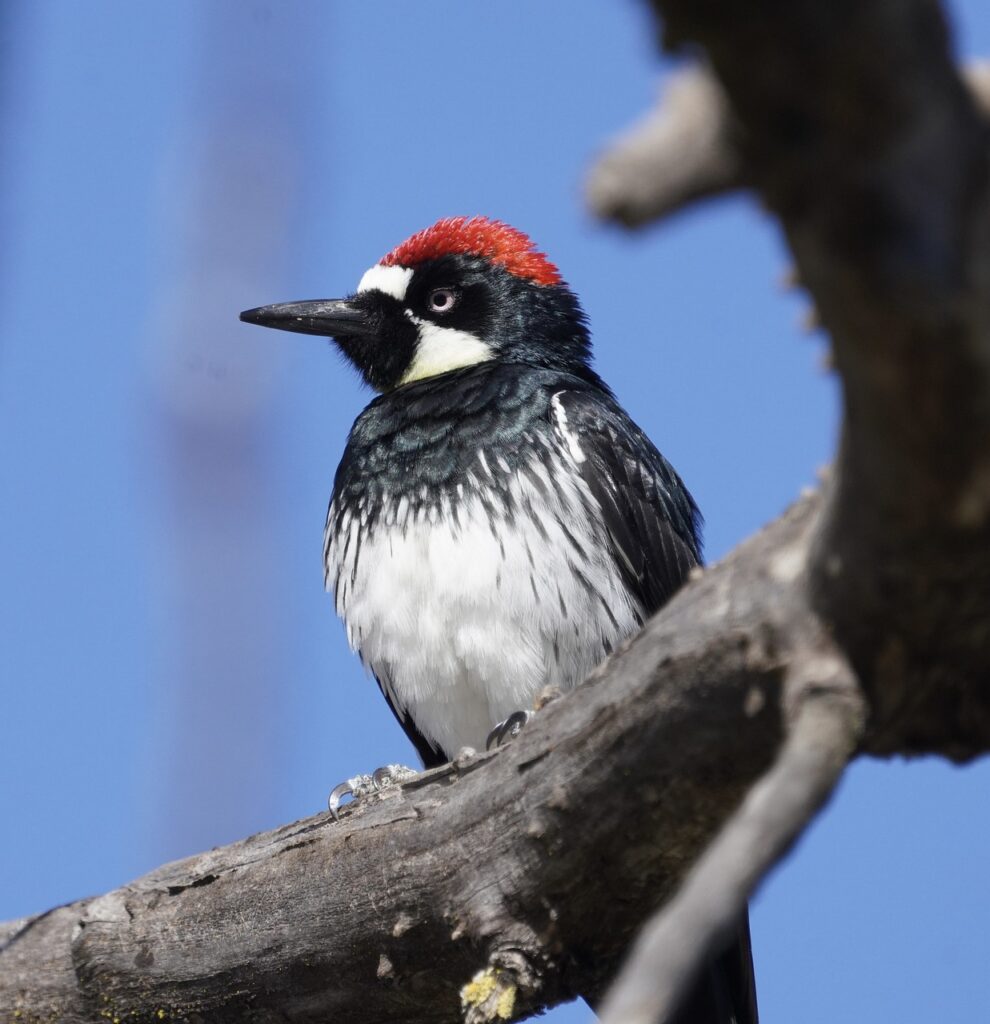
- Woodpeckers have feet with four toes that allow them to climb backward and forward, up and down tree trunks.
- Certain types of woodpeckers can live up to 11 years.
- There are 22 types of woodpeckers in North America.
- Woodpeckers have great hearing, and they listen for insects crawling in a tree before feeding.
- There are no woodpeckers in Australia.
- Woodpeckers perform an average of 12,000 pecks a day.
- A woodpecker’s tongue is up to four times the length of their beak, and sticky, allowing them to quickly grab and eat insects.
Get Your Yard Woodpecker Ready
Visit the Chirp store in Big Bear Lake for all your woodpecker essentials—bird feeders, bird seed, suet, and more.


